| This article is an orphan, as no other articles link to it. Please introduce links to this page from related articles; try the Find link tool for suggestions. (January 2019) |
| Feature detection |
|---|
| Edge detection |
| Corner detection |
| Blob detection |
| Ridge detection |
| Hough transform |
| Structure tensor |
| Affine invariant feature detection |
| Feature description |
| Scale space |
In the fields of computer vision and image analysis, the scale-invariant feature operator (or SFOP) is an algorithm to detect local features in images. The algorithm was published by Förstner et al. in 2009.
Algorithm
The scale-invariant feature operator (SFOP) is based on two theoretical concepts:
- spiral model
- feature operator
Desired properties of keypoint detectors:
- Invariance and repeatability for object recognition
- Accuracy to support camera calibration
- Interpretability: Especially corners and circles, should be part of the detected keypoints (see figure).
- As few control parameters as possible with clear semantics
- Complementarity to known detectors
scale-invariant corner/circle detector.
Theory
Maximize the weight
Maximize the weight = 1/variance of a point
comprising:
1. the image model
2. the smaller eigenvalue of the structure tensor
Reduce the search space
Reduce the 5-dimensional search space by
- linking the differentiation scale to the integration scale
- solving for the optimal using the model
- and determining the parameters from three angles, e. g.
- pre-selection possible:
Filter potential keypoints
- non-maxima suppression over scale, space and angle
- thresholding the isotropy :
eigenvalues characterize the shape of the keypoint, smallest eigenvalue has to be larger than threshold
derived from noise variance and significance level :
Algorithm
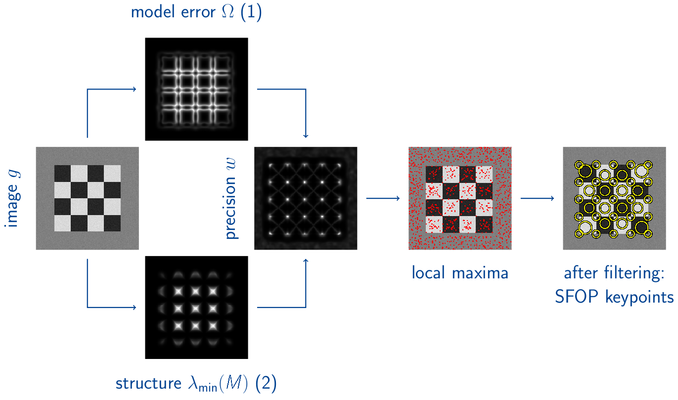
Results
Interpretability of SFOP keypoints
- Results of different detectors on a Siemens star
-
 Sfop: junctions red, circular features cyan
Sfop: junctions red, circular features cyan
-
 Edge-based Regions
Edge-based Regions
-
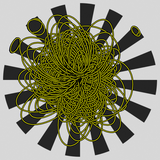 Intensity-based Regions
Intensity-based Regions
-
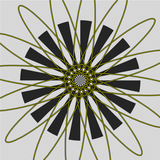 MSER
MSER
-
 Harris affine
Harris affine
-
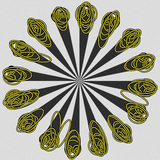 Hessian affine
Hessian affine
-
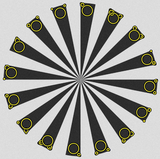 Lowe
Lowe
See also
References
- Forstner, Wolfgang; Dickscheid, Timo; Schindler, Falko (2009). "Detecting interpretable and accurate scale-invariant keypoints". 2009 IEEE 12th International Conference on Computer Vision. pp. 2256–2263. CiteSeerX 10.1.1.667.2530. doi:10.1109/ICCV.2009.5459458. ISBN 978-1-4244-4420-5.
- ^ Bigün, J. (1990). "A Structure Feature for Some Image Processing Applications Based on Spiral Functions". Computer Vision, Graphics, and Image Processing. 51 (2): 166–194.
- Förstner, Wolfgang (1994). "A Framework for Low Level Feature Extraktion". European Conference on Computer Vision. Vol. 3. Stockholm, Sweden. pp. 383–394.
 = 1/variance of a point
= 1/variance of a point 


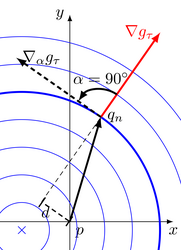



 to the integration scale
to the integration scale
 using the model
using the model


 :
:
 and significance level
and significance level  :
: